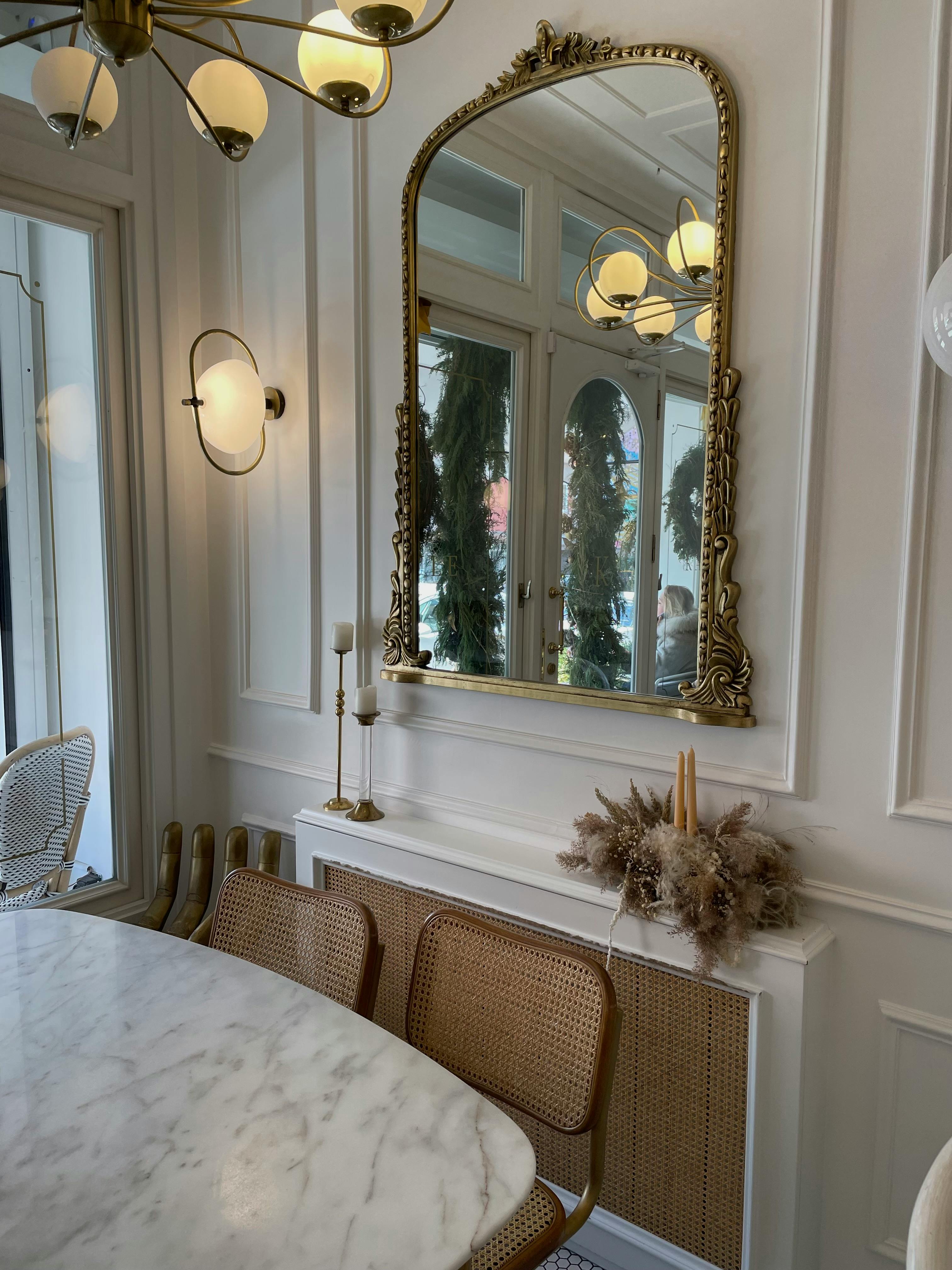
Imagine you stumble across an old watch, weathered with time, at a flea market. Its face may be slightly discolored, and the hands have taken on an antiqued hue. To the untrained eye, these imperfections may seem like blemishes, but to watch enthusiasts, they hold a charm all their own. This charm is known as “patina,” and it is highly sought after in vintage watch models. But what exactly is patina, and why does it hold such importance in the world of horology? In this article, we will explore the significance of patina in vintage watches and uncover the allure behind its weathered beauty.
Definition of Patina
Patina as a term
Patina is a term commonly used in the world of watches to describe the natural aging or deterioration that occurs on the surface of a timepiece over time. It refers to the unique discoloration, texture, or wear that develops on the various components of a watch, such as the dial, case, lume, bezel, or bracelet. Patina is a highly sought-after characteristic in vintage watches and is often considered a testament to a timepiece’s history, usage, and authenticity.
Patina in the context of watches
In the context of watches, patina refers specifically to the changes in the appearance of the watch due to exposure to natural elements, wearing, or aging. Unlike other objects where patina may be seen as a sign of deterioration or neglect, in the world of watches, patina adds value, charm, and character. It is seen as a mark of distinction and authenticity, representing the unique journey and story that each vintage timepiece has experienced.
Understanding the Significance
Increased Desirability
One of the primary reasons why patina holds such significance in vintage watches is its ability to increase the desirability and collectability of a timepiece. The presence of patina on a watch often speaks to its age and authenticity, making it more appealing to collectors and enthusiasts. A watch with a beautifully aged dial or a case that shows signs of wear can evoke a sense of nostalgia, capturing the attention and interest of those who appreciate the authenticity and history behind a timepiece.
Unique Identity
Patina also plays a vital role in giving each vintage watch a unique identity. No two watches will develop patina in exactly the same way, resulting in a one-of-a-kind appearance that sets each timepiece apart from the rest. This uniqueness is highly valued by collectors and watch enthusiasts who appreciate the individual character that comes with the aging process. Patina acts as a fingerprint, making each vintage watch truly special and irreplaceable.
Historical Context and Storytelling
Beyond aesthetics, patina carries the power to tell a compelling story. Each scratch, discoloration, or fading on a vintage watch’s surface serves as a visual representation of the timepiece’s journey and the experiences it has undergone. This historical context can be fascinating to enthusiasts who appreciate the rich narratives and connections that can be forged through horology. Patina allows vintage watches to act as time capsules, transporting the wearer to past eras and immersing them in the stories of previous generations.
Aesthetic Appeal
From an aesthetic perspective, patina adds a layer of depth and character to a watch. The unique texture, color variations, and aged appearance bestowed by patina lend a sense of vintage charm and elegance to a timepiece. Many collectors find the imperfect beauty of a watch with patina far more captivating than a pristine, brand-new watch. The subtle hues and fine details that develop over time evoke a sense of rustic elegance and convey a sense of sophistication that cannot be replicated artificially.

Factors Contributing to Patina
Age and Wear
The primary factor contributing to the development of patina is the age and level of wear a watch has endured. As a watch ages and experiences prolonged usage, the accumulation of external influences such as sunlight, moisture, dirt, and friction contributes to the gradual transformation of its surface. The longer a watch has been in existence and the more it has been worn, the more likely it is to exhibit signs of patina.
Materials and Construction
The materials used in the construction of a watch play a significant role in determining the type and extent of patina that develops. Different metals, such as stainless steel, brass, or gold, react differently to environmental conditions, resulting in diverse patina effects. Additionally, the quality of the craftsmanship and the design of the watch can also influence how patina manifests on its surface. The attention to detail in the finishing, the choice of materials, and the overall design can all contribute to the uniqueness of the patina that develops over time.
Exposure to Elements or Environments
The exposure of a watch to specific elements or environments can greatly accelerate the development of patina. For example, prolonged exposure to sunlight, moisture, saltwater, or extreme temperatures can expedite the oxidation and aging process of a watch’s components. Watches worn in humid climates or during outdoor activities are more likely to exhibit patina due to increased exposure to environmental factors. These external influences add layers of character and uniqueness to a watch’s appearance as they leave their distinct mark on its surface.
Usage and Care
The way a watch is used and cared for also affects the development of patina. Regular wear and usage expose the watch to constant contact, friction, and minor impacts, causing the gradual wear and tear that contributes to patina. Conversely, a watch that has been carefully stored and rarely worn will exhibit minimal patina. However, extreme neglect or improper care can also result in detrimental damage to the watch, compromising its condition and value, so finding a balance between regular wear and careful maintenance is key.
Different Types of Watch Patina
Dial Patina
Dial patina refers to the aging and discoloration that occurs on the watch dial, which is the face of the timepiece. Over time, the once vibrant colors may fade, and the texture of the dial may change, creating a unique patina pattern. Discoloration and spotting are common occurrences due to exposure to light, moisture, or other environmental factors. Dial patina can range from subtle changes, such as a slight change in color, to more pronounced patina, including tropical dials, where the original color transforms into a rich golden brown or even black.
Case Patina
Case patina refers to the natural aging and wear patterns that appear on the watch case, which houses the movement and protects the internal components. The case is often exposed to daily wear and encounters with various surfaces, resulting in scratches, dents, and fading of the metal’s original finish. These marks of time contribute to the charm and character of a vintage watch, giving it a distinct appearance that reflects its unique history.
Lume Patina
Lume patina refers to the aging of the luminescent material applied to the watch’s hands, hour markers, or bezel inserts. Lume is often made from a mixture of phosphors and a binder material that glows in the dark after being exposed to light. Over time, the lume material may begin to discolor, darken, or lose its luminosity, resulting in a distinct patina. This patina can range from a mellow yellowish hue to a vibrant orange or even a creamy off-white color, depending on the specific lume material used and the amount of exposure to light and wear.
Bezel Patina
Bezel patina refers to the aging of the bezel, which is the rotating ring surrounding the watch crystal. Bezels are commonly used for measuring time intervals or tracking specific functions, and repeated handling and exposure to the elements can lead to noticeable wear and discoloration. Aged bezels often exhibit faded or discolored markings, indicating the passage of time and adding to the overall vintage appeal of a watch.
Bracelet Patina
Bracelet patina refers to the changes that occur on the metal bracelet of a watch over time. Depending on the materials used, such as stainless steel or gold, the bracelet can develop its own unique patina. Scratches, scuffs, and fading of the metal’s original finish are common signs of wear on the bracelet. These signs of age and use contribute to the overall character of the watch and enhance its vintage allure.

Authenticity and Originality
Importance of Original Patina
When it comes to vintage watches, the authenticity and originality of the patina are highly valued by collectors and enthusiasts. Original patina not only adds to the aesthetic appeal of the watch but also serves as a tangible link to the time period in which the watch was produced and used. It is a testament to the watch’s authenticity, as the patina develops naturally over time and cannot be replicated or imitated. The presence of original patina gives a watch credibility and assures collectors that they are owning a piece of history.
Patina vs. Fake Aging and Artificial Distress
As the popularity of vintage watches and their patina continues to rise, so does the market for artificially aged or distressed timepieces. Fake aging, or the intentional creation of a patina-like appearance, is a controversial practice in the watch industry. While some may argue that artificially aged watches can offer the vintage look without the expense and risk associated with genuine vintage models, purists firmly believe in the importance of natural patina as a true reflection of a watch’s history and use. The presence of original patina holds a level of authenticity and emotional connection that cannot be replicated through artificial means.
Market Value and Collector’s Preference
The presence and quality of patina can greatly impact the market value of a vintage watch. Collectors and enthusiasts often place a premium on watches with well-preserved original patina, as it signifies the originality, rarity, and desirability of the timepiece. A vintage watch with a beautifully aged dial, case, or lume can command a higher price compared to a similar model in pristine condition. The subjective appreciation for patina among collectors further enhances its value, making it a sought-after attribute in the vintage watch market.
Methods of Preserving or Enhancing Patina
Conservation and Gentle Cleaning
Preserving patina involves employing careful conservation techniques to retain the original manifestation of aging on a watch. This typically means avoiding abrasive or harsh cleaning methods that would remove or damage the patina. Gentle cleaning using mild solvents and soft brushes can help remove dirt and debris while preserving the integrity of the patina. The goal is to maintain the watch’s aged appearance while ensuring its long-term stability and functionality.
Limited Restoration and Preservation
In some cases, limited restoration may be necessary to address significant issues or damage to a vintage watch. This restoration should be approached with caution to avoid over-restoring or obliterating the patina. The focus is usually on retaining as much of the original patina as possible while addressing functional or structural concerns. Preserving the watch’s overall look and character is paramount, and experienced watchmakers specializing in vintage timepieces are skilled at striking this delicate balance.
Patina Enhancement Techniques
For those who appreciate the aesthetics of patina but wish to enhance its appearance, certain techniques can be used to highlight or intensify the existing patina. These techniques range from applying special patina-inducing solutions or polishing methods to achieve a desired look. However, it is crucial to note that patina enhancement techniques can be controversial, as they blur the line between original patina and artificially induced effects. Care should be taken to ensure that any enhancement is undertaken with full transparency and does not compromise the watch’s authenticity.
Considerations for Modern Watches
While patina is most commonly associated with vintage watches, it is worth noting that even modern timepieces can develop their own form of patina over time. However, modern watches often come with more durable materials and improved resistance to wear and tear, resulting in a slower patina development. Some collectors and enthusiasts still appreciate the subtle changes that occur on modern watches, as it adds a touch of character and uniqueness to an otherwise pristine timepiece. Caring for modern watches with patina involves similar considerations, such as gentle cleaning and proper maintenance, to preserve the aging process and aesthetics.

Caring for Watches with Patina
Proper Storage
Proper storage is essential for maintaining the longevity and appearance of a watch with patina. Avoiding exposure to extreme temperature fluctuations, high humidity, direct sunlight, and magnetic fields can help prevent accelerated aging or damage to the patina. Ideally, watches with patina should be stored in a cool and dry environment, away from excessive light and moisture. Storing the watch in a watch box or dedicated watch case with cushioning and individual compartments can offer additional protection from external influences.
Regular Maintenance
Regular maintenance is vital for preserving the condition and functionality of a watch with patina. This includes periodic servicing by a qualified watchmaker, where the movement is cleaned, oiled, and adjusted. Service intervals vary depending on the watch and its manufacturer’s recommended schedule, but it is generally recommended every three to five years for most mechanical watches. Regular maintenance not only ensures accurate timekeeping but also allows the watchmaker to assess the condition of the patina and address any issues that may arise.
Avoiding Damaging Cleaning Methods
When cleaning a watch with patina, it is important to exercise caution to avoid damaging the delicate patina on its surface. Harsh chemicals, ultrasonic cleaners, or rough scrubbing can remove or alter the patina, compromising the watch’s authenticity and vintage charm. Instead, opt for gentle cleaning methods using mild solvents, soft brushes, and microfiber cloths to remove dirt and debris without affecting the patina. If in doubt, it is always best to consult a professional watchmaker or conservator experienced in handling vintage watches.
Appreciating Patina in Vintage Watches
Personal Taste and Emotional Connection
The appreciation of patina in vintage watches is a subjective matter that largely depends on personal taste and emotional connection. Some collectors prefer their watches to appear as if they just left the factory, while others find beauty in the imperfections and signs of wear that patina brings. The allure of patina lies in its ability to invoke nostalgia and to connect the present wearer with the watch’s past owners and the eras in which it has been worn. It is this emotional connection that elevates patina from being mere aging and wear to a cherished and highly valued aspect of vintage timepieces.
Telling Time While Telling Stories
A watch with patina not only functions as a timekeeping instrument but also serves as a storyteller. Every scratch, fade, or discoloration tells a story of the watch’s journey and the experiences it has shared with its previous owners. It transports us back in time, allowing us to appreciate the craftsmanship, history, and human connection associated with the timepiece. By wearing a watch with patina, we become part of this ongoing story, adding our own chapter to its legacy and passing it down for future generations to appreciate.
Challenges Associated with Patina
Deterioration and Damage
While patina is generally seen as a desirable and aesthetically pleasing characteristic, there are potential risks associated with the aging process. Over time, patina can deepen, deteriorate, or become compromised, especially if the watch is not properly cared for or subjected to extreme environmental conditions. For instance, dial patina may become excessively faded or completely illegible, lume material may crack or fall off, and case patina may worsen due to corrosion. Avoiding excessive exposure to detrimental elements and ensuring regular maintenance and responsible usage can help mitigate these challenges.
Limited Availability of Original Parts
Another challenge that arises with patina in vintage watches is the limited availability of original parts for repairs or replacements. As vintage models become older and rarer, the supply of original components diminishes, making it increasingly difficult to find matching parts with the same patina. This scarcity can present challenges and require creative solutions to ensure that any necessary repairs or restoration work preserves the integrity of the watch’s aging characteristics.
Matching Patina in Restoration
When restoring a vintage watch with significant damage or wear, matching the original patina can be a complex and intricate task. The goal is to seamlessly repair or replace damaged components while preserving the overall appearance and character of the patina. Experienced watchmakers and restoration specialists use various techniques, such as aging or distressing new parts, to achieve a cohesive and authentic look. However, achieving a perfect match is often challenging, and compromises may need to be made to ensure the watch’s functionality, longevity, and overall aesthetic quality.
Conclusion
Patina is an enduring characteristic that holds immense significance in the world of vintage watches. It adds desirability, uniqueness, and storytelling to each timepiece, capturing the attention and admiration of collectors and enthusiasts alike. The development of patina is influenced by various factors, including age, wear, materials, exposure, and usage. Different types of patina, such as dial, case, lume, bezel, and bracelet patina, contribute to the overall charm and aesthetic appeal of a watch. The authenticity and originality of patina are highly valued, with artificial aging techniques being met with mixed opinions within the watch community. Preserving or enhancing patina requires careful consideration, balanced maintenance, and knowledge of conservation techniques. Caring for watches with patina involves proper storage, regular maintenance, and avoiding damaging cleaning methods. Ultimately, the appreciation of patina in vintage watches is a personal and emotional connection, allowing us to acknowledge the history, craftsmanship, and stories that time has imprinted on these exceptional timepieces. While patina presents challenges, such as deterioration, limited availability of parts, and matching in restoration, it remains a coveted characteristic that adds depth, authenticity, and subjective value to vintage watches. Whether you prefer the pristine or embrace the patina, the significance of this natural aging process in vintage models cannot be overlooked.